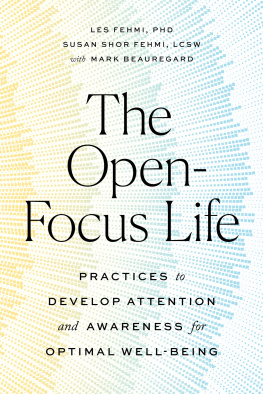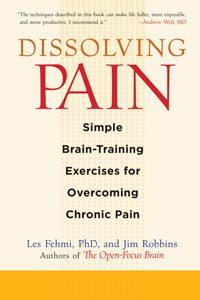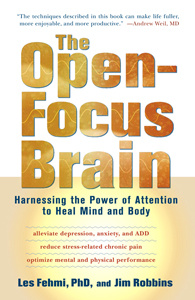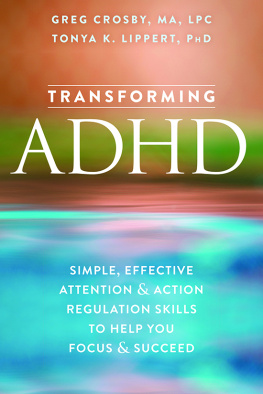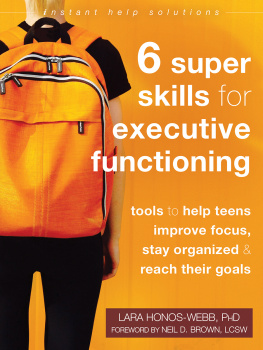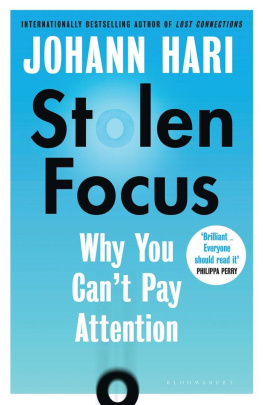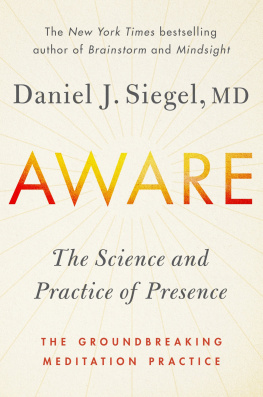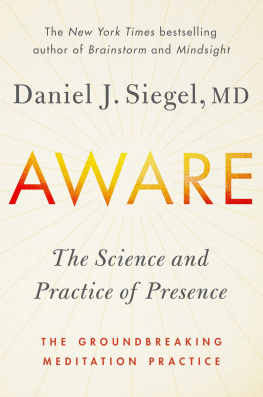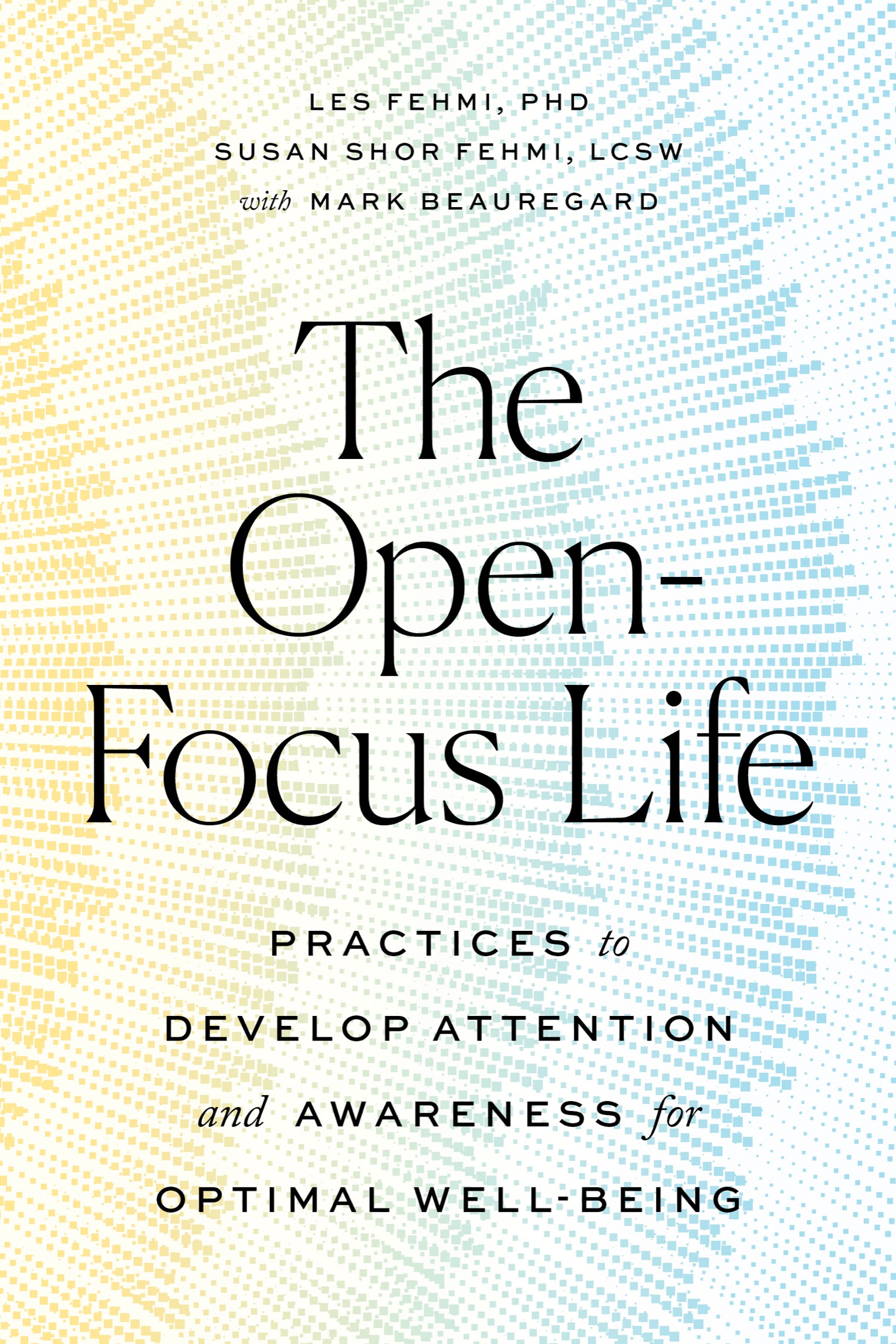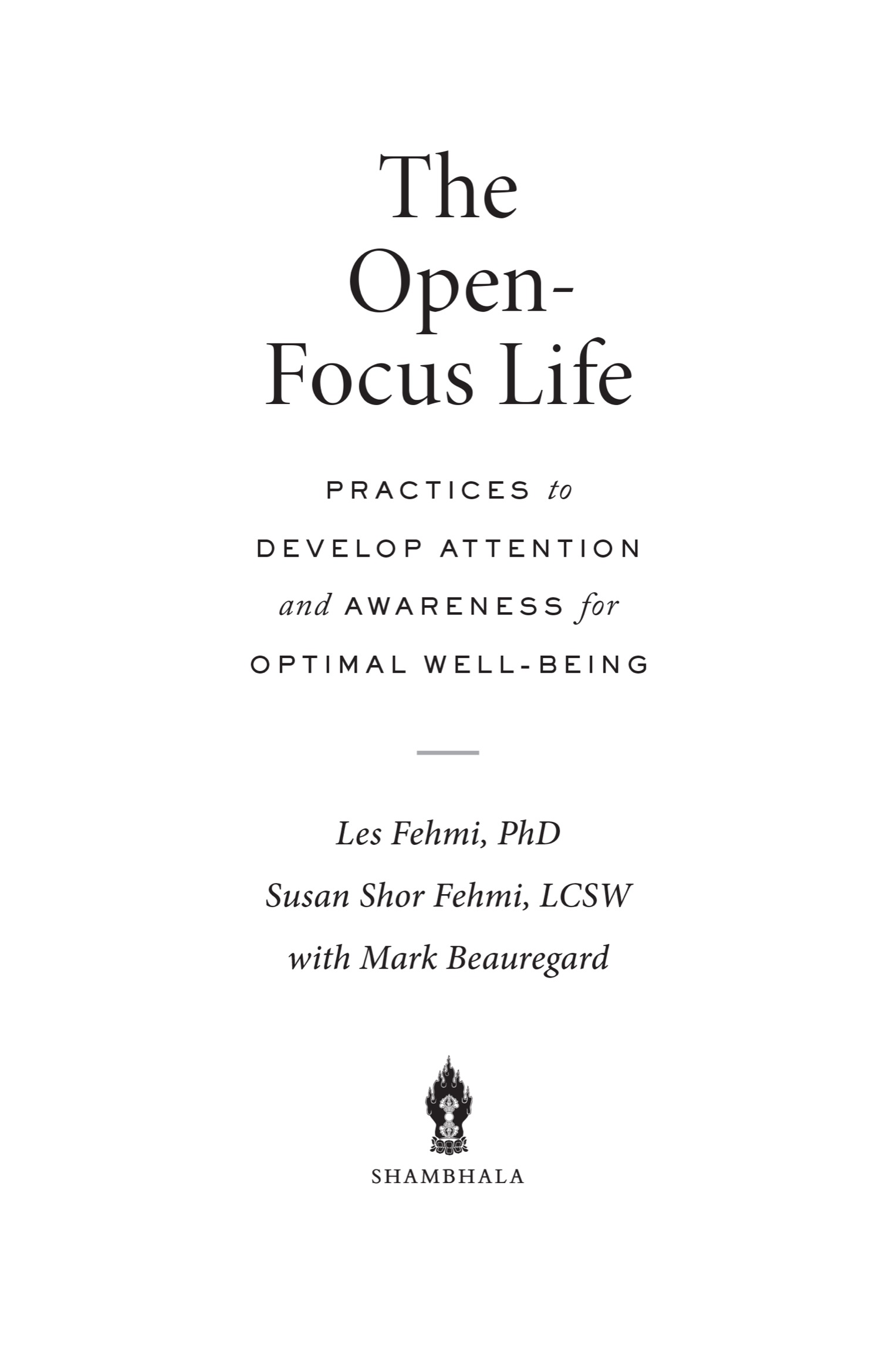Shambhala Publications, Inc.
Interior design: Greta D. Sibley
All rights reserved. No part of this book may be reproduced in any form or by any means, electronic or mechanical, including photocopying, recording, or by any information storage and retrieval system, without permission in writing from the publisher.
Names: Fehmi, Les, author. | Fehmi, Susan Shor, author. | Beauregard, Mark, author.
Title: The open-focus life: practices to develop attention and awareness for optimal well-being / Les Fehmi, PhD, Susan Shor Fehmi, LCSW with Mark Beauregard.
Description: First edition. | Boulder, Colorado: Shambhala, [2021] | Includes bibliographical references.
Subjects: LCSH : Biofeedback training. | Attention.
Classification: LCC BF 319.5. B 5 F 44 2021 | DDC 152.1/88dc23
INTRODUCTION
WE DONT OFTEN think of paying attention as a learned behavioryour parents or teachers told you to pay attention when you were growing up, even scolded you for not paying attention, but they didnt show you how to pay attention or teach you the many different kinds of attention you could use. They simply expected that you would focus very intently on what they wanted you to do, to the exclusion of everything else. Thats how we all learned, unconsciously, to pay attention.
Our hectic, fragmented modern lives encourage us to stay in that narrow, intently focused mode of attention in order to tune out all the distractions. But constantly paying attention in that way is taxing and contributes to the depression, stress, and stress-related conditions that so many of us suffer from these days.
Human beings evolved to pay attention to their surroundingstheir spacein an intuitive, instinctive way, much the way other animals still do. Reconnecting to that more fluid, flexible way of paying attention can return us to a more natural state of calm and relaxation, even when our lives are busy and demanding.
Thats the reason for this book. The Open-Focus Life is a practical guide that offers a practical solution to our modern problems of disconnection and stress. That solution lies in the power of your own awareness; more specifically, the solution is to become aware of physical space in a way thats different from the way youre accustomed to.
When we talk about space, were talking about the space youre in right now: the outer space that is the room youre in and everything beyond it, and the inner space that makes up your own body, feelings, and thoughts. For over forty years, Dr. Les Fehmi has been studying the impact of our awareness of physical space on brain-wave activity, on our central nervous systems, and on the way we experience ourselves and the world around us. This book distills those forty years of research, peer-reviewed academic studies, and private sessions with individuals, couples, and groups into a method for changing the way you pay attention that will positively affect your life.
By observing subjects brain waves, Dr. Fehmi came to realize that a significant increase in a brain wave called alpha occurred when subjects directed their attention to the physical spaces around them and inside them. Alpha brain waves are produced in greater abundance when the autonomic nervous system reduces the sympathetic overarousal of the fight, flight, or freeze response, allowing the parasympathetic part of the nervous system to produce balance. In other words, when the nervous systems balance is reinstated, all the peripheral systems normalize, including the endocrine, muscular, and vascular systems, which is why stress symptoms reduce, pain can dissolve, and life can become more fluid when youre paying attention in the ways well discuss.
The Open-Focus Life gives you easy-to-understand guides and models, with almost effortless changes that you can begin making right now, even as youre reading. This point is worth emphasizing, because, at first, it may not sound revolutionary: changing the way you pay attention to the spaces around you will change your life. This new way of paying attention can solve or prevent common problems, relieve stress and chronic pain, and help you find more joy in your everyday experiences and relationships.
Our natural way of beingour natural way of paying attention broadly, intimately, and fluidly to the world around ushas gradually been subverted by the speed and ever-increasing demands of the modern world, which has led us to a chronic and rigid narrowing of focus. By opening our focus through simple habits of attention, we can reverse the negative effects of this artificially created stress and live calmer, more contented lives in which were healthier, more optimistic, and more deeply connected to our hearts, minds, and bodies.
The Open-Focus Life is a practical book, a simple yet transformative guide to using the greatest tool we have as human beings: the power of our attention.
How to Use This Book
This book will open new avenues of health and well-being to you by doing two things: making you aware of your attention styles, and showing you how to move fluidly among different styles of attention for maximum benefit.
We have discussed many of the principles included here in our previous books The Open-Focus Brain and Dissolving Pain, but this book will give you quick, practical shortcuts to achieving a calmer, more relaxed, less stressful life by illustrating how to handle challenges great and small, ease worries and anxieties, and relieve chronic aches and pains with easy-to-learn and easy-to-apply methods. Changing how you pay attention will change your life for the better, right away, and this book will show you how to do it.
The first two chapters provide an overview of attention styles and what we mean when we talk about space, which is different from the ways people typically think about space. Each subsequent chapter covers common challenges and difficult situations that we all face. When you need to discover how to deal with a particular workplace or family matter, or how to address a particular emotional problem, you can simply flip to that chapter. There youll find a brief discussion of the problem, our Open-Focus solutions, and a scene or two that illustrates how you can use the practical techniques weve developed to get through these situations or solve these problems in your own life.
If youd like more in-depth discussions of the science behind these methods, you can flip to the epilogue for references to peer-reviewed academic studies by the authors and other psychologists and counselors, as well as books about the neuroscience of awareness, the biological processes involved in creating the bodys sense perceptions, and other issues related to how our brains interpret and understand the physical world around us.
The surprisingly simple, straightforward techniques in this book are based on sophisticated neuroscience, but the methods themselves are easy to use in everyday life, and you can start using them right now.

